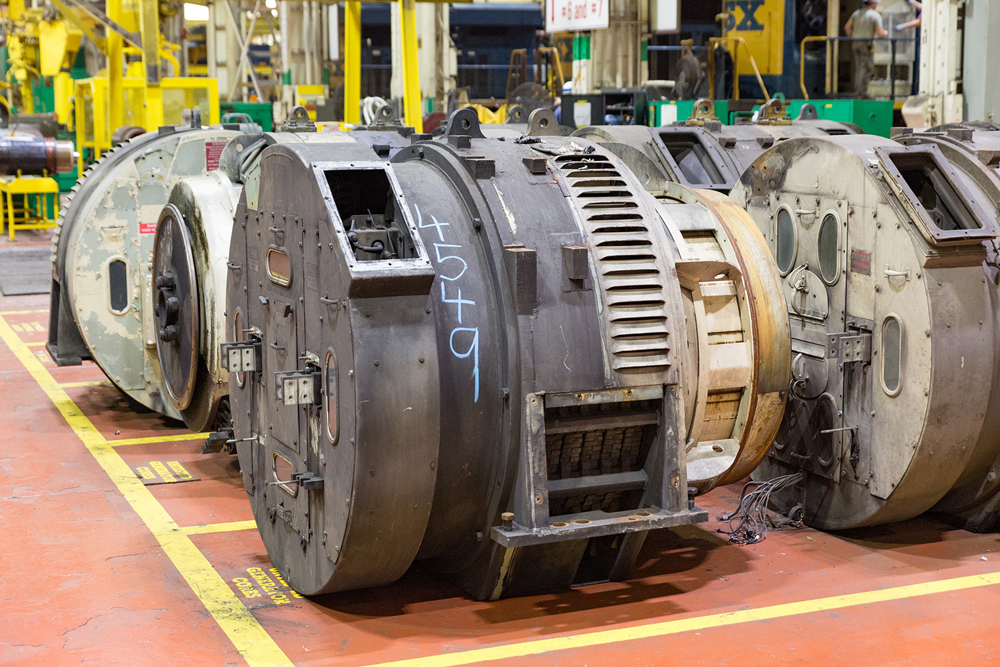What locomotive generators do is no secret: They produce electricity.
Alternators and generators in locomotives convert mechanical energy from the prime mover to electrical energy to pull the train. They are the main device connected to the prime mover. Advances over the years have improved the type and size of alternators and generators, enabling locomotive builders and rebuilders to simplify or eliminate many electrical systems once necessary to achieve maximum output from a locomotive while under load.
DC generators are in the minority these days with AC alternators found almost everywhere. DC generators were standard until the 1960s, producing up to 600 volts, but their maintenance and reliability issues caused the changeover to AC alternators. Alternators would eventually be able to produce well in excess of 1,200 volts at all speed ranges. AC alternators can also be produced with one or more sets of windings allowing for separate outputs to various systems on the locomotive.
The alternator or generator traditionally provides 100% of its output for the traction motors while a companion or auxiliary alternator is mated to it, providing power for the rest of a locomotive’s electrical needs. This device is attached to the end of the alternator and both are bolted directly to the prime mover. A companion alternator typically has more than one set of windings to create multiple power outputs dedicated to different locomotive functions. The companion alternator design and number of outputs can vary from builder to builder and even from locomotive model to locomotive model, but will provide electricity for the various cooling fans, computer systems, battery charging, and alternator excitation, among other things.
A trend that has been ongoing for many years is for railroads and third-party locomotive rebuilders to replace D.C. main generators in older EMD locomotives when performing major electrical upgrades or complete locomotive overhauls. EMDs AR10 A.C. alternator fits well in the older D32 D.C. main generator’s footprint inside a locomotives car body, making this a popular swap. This increases the reliability of the locomotive while reducing long-term maintenance costs.















what is the weight of the alternators in a modern locomotive such as a GE ac 4400?